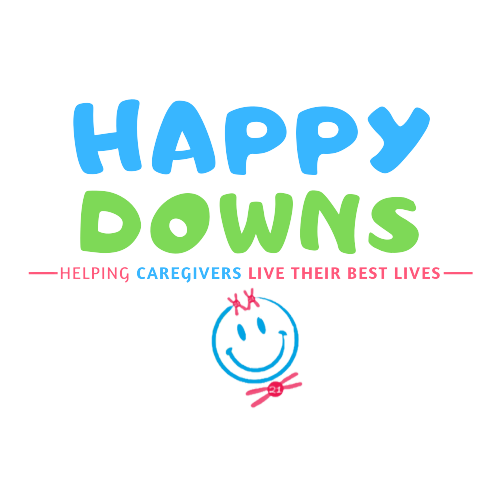Planning for guardianship and legal decisions for individuals with Down Syndrome requires careful thought and teamwork. Every family and every person is unique, so there is no one-size-fits-all solution. This guide breaks down the process into clear, simple steps to help you create a plan that grows and adapts with your loved one’s needs.
Step 1: Assessing Needs and Family Dynamics
Start by understanding the needs of your loved one and the strengths of your family. Write down daily routines, interests, and long-term goals. Consider these questions:
- What are your loved one’s abilities and challenges?
- How does your family manage day-to-day tasks?
- What decisions need legal oversight (education, healthcare, finances)?
- How much independence does your loved one have or need?
- Who else (extended family or friends) is involved in daily care?
Talking openly with family members and professionals can provide important insights for choosing the right guardianship arrangement.
Step 2: Guardianship Legal Rights and Responsibilities
Learn the legal basics to protect the rights of your loved one. Familiarize yourself with your country’s laws that affect guardianship decisions. Key areas to review include:
- Legal Capacity: Understand how the law views decision-making abilities.
- Types of Guardianship: Options like full guardianship, limited guardianship, and supported decision-making.
- Financial Management: How savings and assets are managed.
- Healthcare Decisions: Rights related to medical treatments and long-term care.
Working with a legal professional who specializes in disability law can help you understand which legal steps best meet your family’s needs.
Step 3: Guardianship Options and Alternatives
After assessing needs and legal rights, explore different guardianship options. Common choices include:
- Full Guardianship: The guardian makes all legal and financial decisions.
- Limited Guardianship: Only specific areas, such as healthcare or finances, are managed by a guardian.
- Supported Decision-Making: The individual gets help to make decisions while keeping final authority.
- Power of Attorney: A temporary option for specific situations.
Compare these options and think about what will best support independence while ensuring safety. Look for real-life examples, read testimonials, and talk to experts to guide your decision.
Step 4: Guardianship Financial, Medical, and Personal Planning
Practical planning goes hand in hand with legal decisions. Organize:
- Financial Plans: Set up special needs trusts or similar tools to protect assets.
- Medical Directives: Keep copies of healthcare directives, living wills, and other medical records.
- Personal Goals: Write down the individual’s interests and ambitions.
Keep a centralized file (either digital or physical) with all important documents. Regular updates will ensure your plan stays current as needs change.
Step 5: Collaboration with Legal Professionals and Support Networks
Expert advice is key to successful planning. Build a strong team that may include:
- Legal Counsel: Attorneys specializing in disability law.
- Financial Advisors: Experts who understand special needs planning.
- Medical Professionals: Doctors and care providers familiar with long-term needs.
- Community Resources: Support groups and advocacy organizations.
Regular meetings with your support network can help keep the plan effective and updated.
Step 6: Guardianship Communication and Ongoing Support
Good communication makes a guardianship plan work. Use these simple strategies:
- Schedule regular update meetings.
- Create a clear communication plan (emails, summaries, or meetings).
- Document all important decisions.
- Involve all family members in discussions.
This open dialogue helps prevent misunderstandings and makes sure everyone is informed and involved.
Step 7: Updating Your Plan Over Time
A guardianship plan should be flexible. Life changes, and so should your plan. To keep it effective:
- Set regular review dates (annually or after major events).
- Stay updated on changes in the law.
- Ask for feedback from family and your loved one when possible.
- Update financial, medical, and personal plans as needed.
Regular reviews and small adjustments can turn challenges into opportunities for improvement.
Guardianship FAQs
What if my family disagrees on the guardianship option?
Seek a mediated discussion with a professional who understands both legal and family dynamics. Document your loved one’s wishes to help guide the decision.
How do I keep legal decisions respectful of my loved one’s independence?
Incorporate supported decision-making to involve your loved one as much as possible.
How can I manage unexpected changes in financial or medical situations?
Keep all records updated, schedule regular reviews, and maintain open communication with everyone involved.
What if the legal process feels overwhelming?
Break down the process into small, manageable steps and consider joining support groups for families in similar situations.
Final Thoughts & Next Steps for Guardianship Planning
Effective guardianship planning is an ongoing journey that combines legal decisions with everyday practical steps. By:
- Assessing needs and family dynamics,
- Understanding legal rights,
- Exploring various guardianship options,
- Organizing financial, medical, and personal plans,
- Collaborating with experts, and
- Maintaining clear communication,
you create a strong, flexible plan that grows with your loved one’s needs.
Take the first step today by gathering information, setting up meetings, and reviewing your current plans. Each small action builds a secure future that respects the independence and dignity of your loved one.


